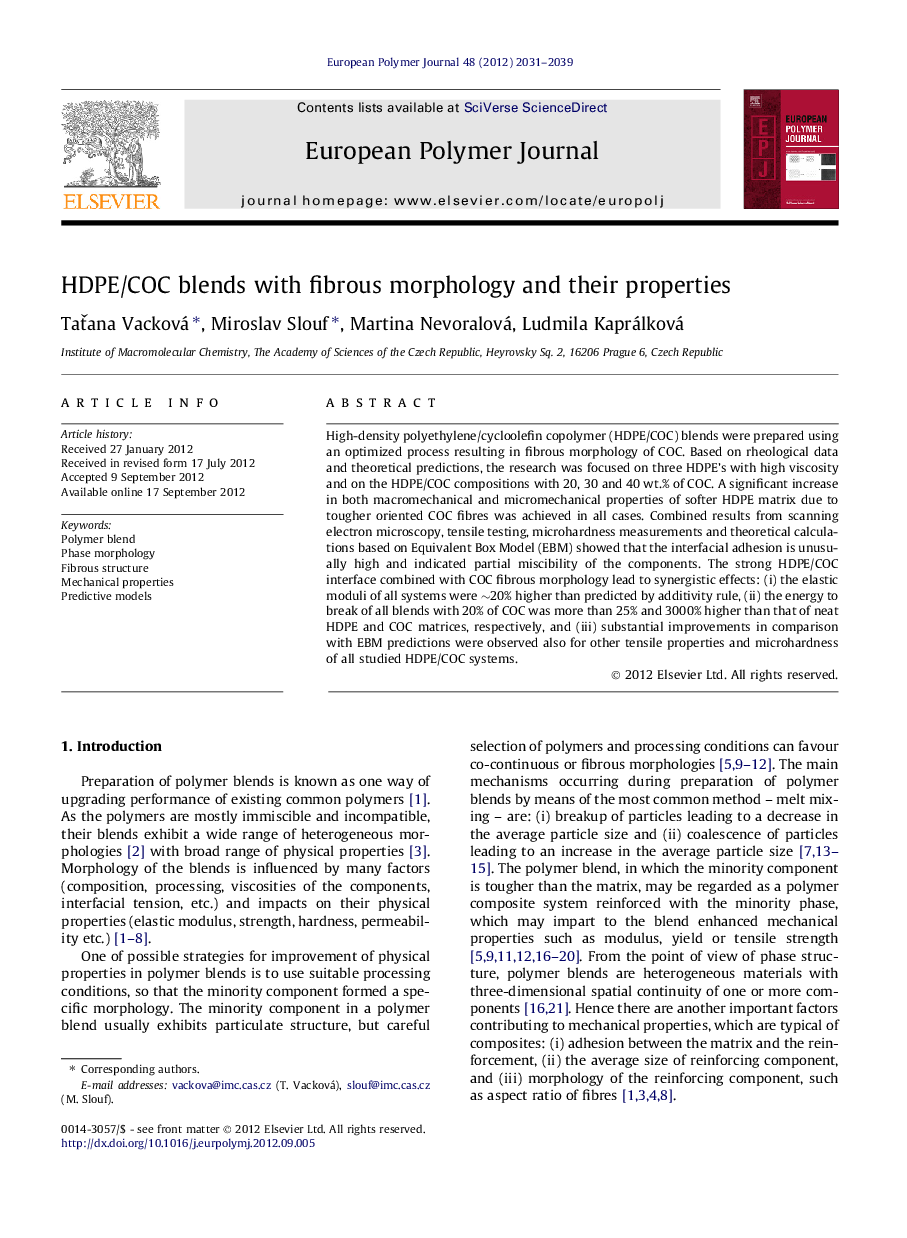| Article ID | Journal | Published Year | Pages | File Type |
|---|---|---|---|---|
| 1398265 | European Polymer Journal | 2012 | 9 Pages |
High-density polyethylene/cycloolefin copolymer (HDPE/COC) blends were prepared using an optimized process resulting in fibrous morphology of COC. Based on rheological data and theoretical predictions, the research was focused on three HDPE’s with high viscosity and on the HDPE/COC compositions with 20, 30 and 40 wt.% of COC. A significant increase in both macromechanical and micromechanical properties of softer HDPE matrix due to tougher oriented COC fibres was achieved in all cases. Combined results from scanning electron microscopy, tensile testing, microhardness measurements and theoretical calculations based on Equivalent Box Model (EBM) showed that the interfacial adhesion is unusually high and indicated partial miscibility of the components. The strong HDPE/COC interface combined with COC fibrous morphology lead to synergistic effects: (i) the elastic moduli of all systems were ∼20% higher than predicted by additivity rule, (ii) the energy to break of all blends with 20% of COC was more than 25% and 3000% higher than that of neat HDPE and COC matrices, respectively, and (iii) substantial improvements in comparison with EBM predictions were observed also for other tensile properties and microhardness of all studied HDPE/COC systems.
Graphical abstractFigure optionsDownload full-size imageDownload as PowerPoint slideHighlights► High-density polyethylene/cycloolefin copolymer (HDPE/COC) blends were prepared. ► SEM microscopy confirmed high interface adhesion and fibrous morphology of COC. ► Tensile properties of the blends indicated partial miscibility of the components. ► Unusually strong interface and fibrous morphology resulted in synergistic effects. ► Tensile modulus and other properties were higher than theoretical predictions.
